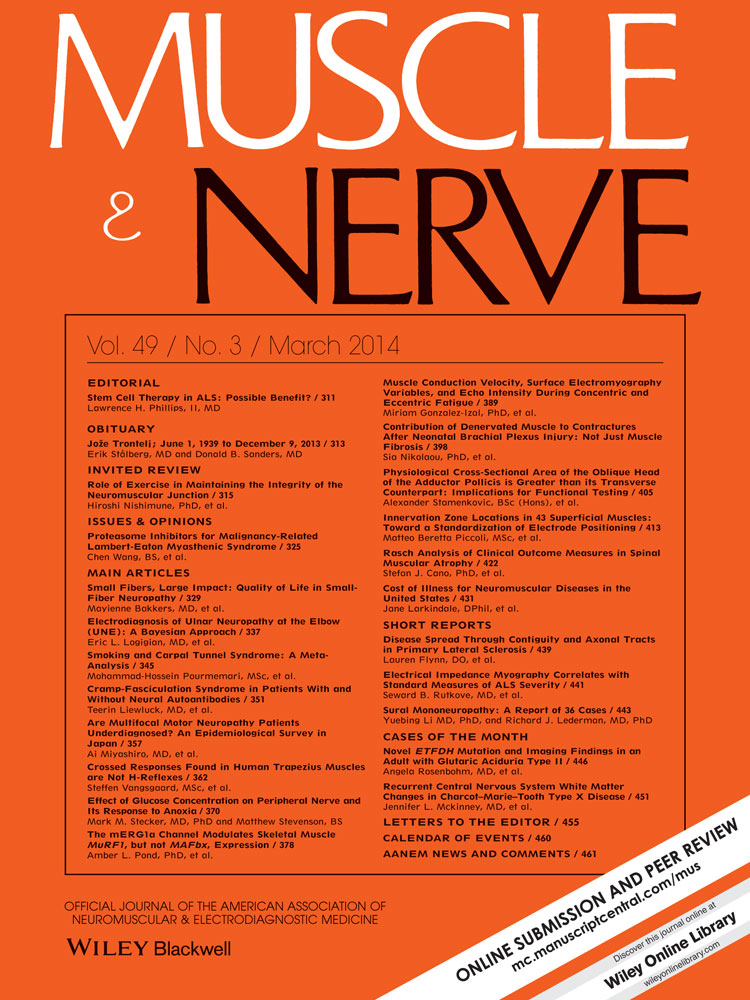Disease spread through contiguity and axonal tracts in primary lateral sclerosis
This research was supported by the Intramural Research Program of the National Institute of Neurological Disorders and Stroke (NIH Z01 NS002976).
ABSTRACT
Our goal in this report was to determine whether symptom progression in primary lateral sclerosis (PLS) was consistent with disease spread through axonal pathways or contiguous cortical regions. The date of symptom onset in each limb and cranial region was obtained from 45 PLS patient charts. Each appearance of symptoms in a new body region was classified as axonal, contiguous, possibly contiguous, or unrelated, according to whether the somatotopic representations were adjacent in the cortex. Of 152 spread events, the first spread event was equally divided between axonal (22) and contiguous (23), but the majority of subsequent spread events were classified as contiguous. Symptom progression in PLS patients is consistent with disease spread along axonal tracts and by local cortical spread. Both were equally likely for the first spread event, but local cortical spread was predominant thereafter, suggesting that late degeneration does not advance through long axonal tracts. Muscle Nerve 49:439–441, 2014




